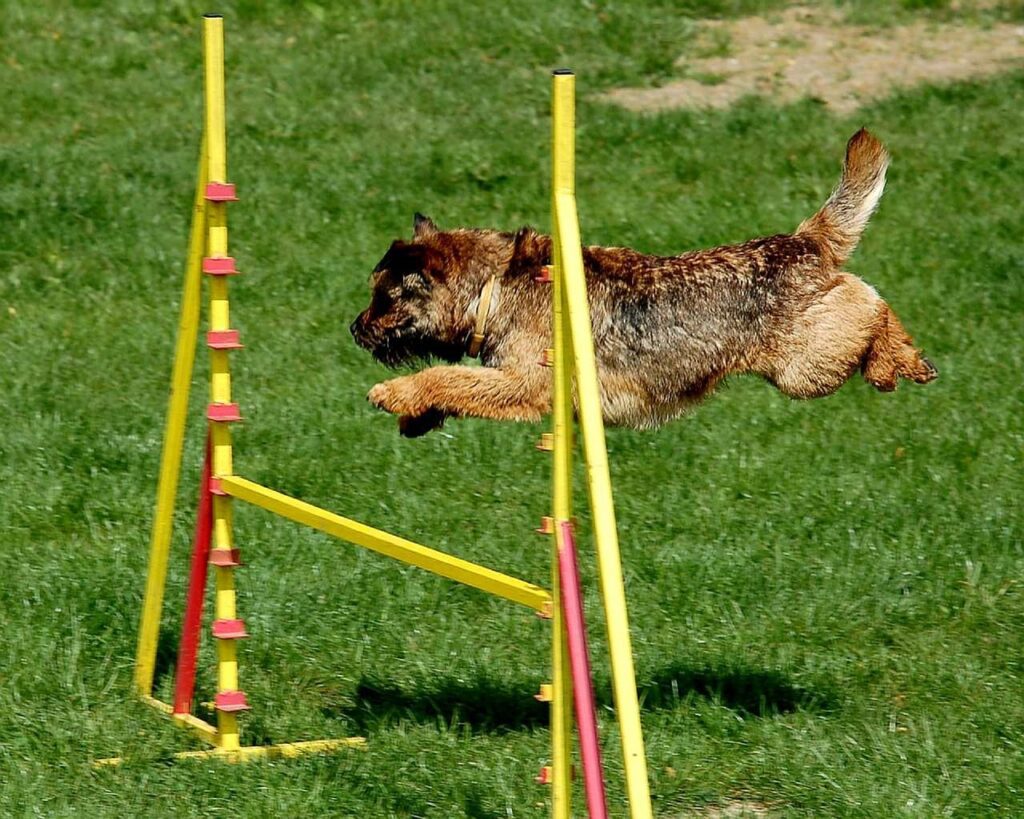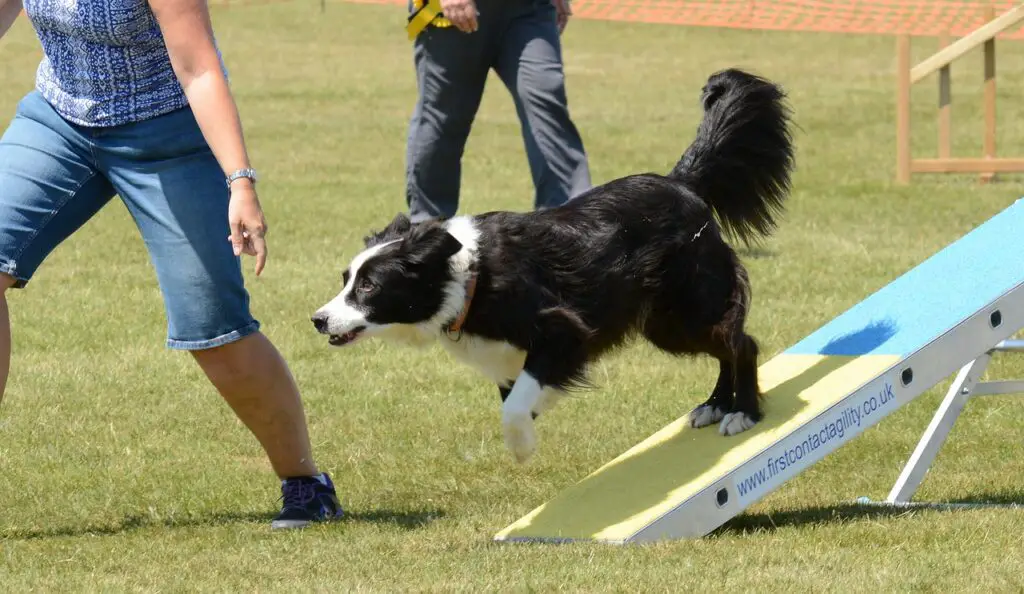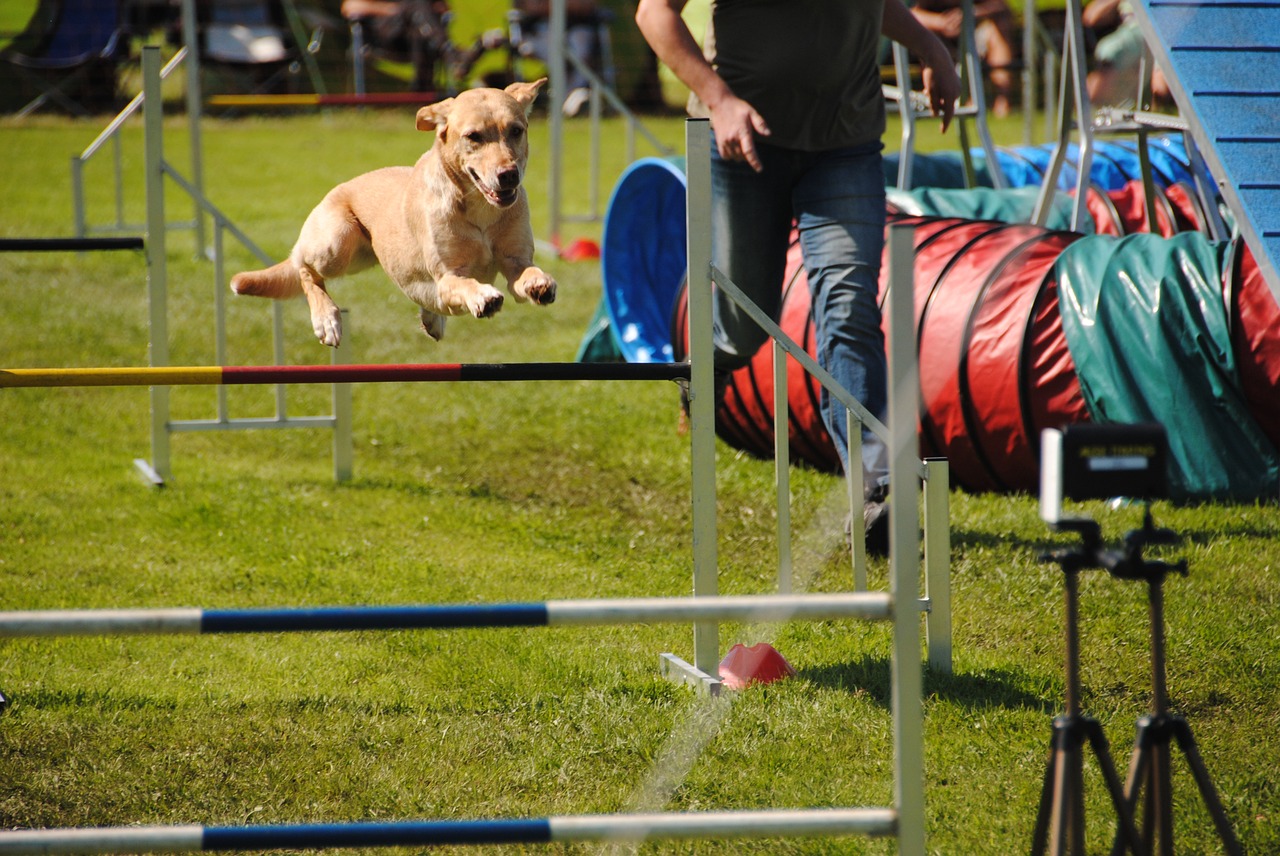If you’re wondering how to set up a dog agility course in your backyard, this mini-guide will help you get started by discussing the different
Dog agility is a popular dog sporting competition that you’ve probably seen countless times on YouTube (since most of us are staying at home). Seeing the dogs go through each challenge on the dog agility course, you’re convinced, “Hey, my dog can do that too!” Your dog certainly can! With consistent training and proper dog agility equipment, your dog can enjoy jumping over bars, running through an open tunnel, weaving through poles, and going through tire jumps.
How Does Dog Agility Course Obstacles Work?
Before you start setting up your dog agility course in your backyard, you must first have a full understanding of how dog agility competition works.
In dog agility trials, dogs navigate through a series of obstacles while racing against the clock. The dog with the fastest time with no penalties wins!
The handler (that’s you!) should guide the dog across obstacles as fast and as accurately as possible. Mistakes can be costly because it affects the overall time and score. A clean run is always desirable but it must be done within the standard course time.
What are the Dog Agility Course Equipment?
There are typically 14 to 20 obstacles in an agility course ring depending on the organizer of the competition. Your backyard may not be large enough for all the obstacles, so for starters, you can begin the essentials: hurdles, hoop, weave poles, and see-saw.
Now, let’s get you up and close personal with each individual piece of dog agility equipment.
Hurdles
Your dog must be able to conquer the hurdles with well-executed jumps. The height of the hurdles will be adjusted according to your dog’s height.
For the standard jump, your dog must take off from one side and land on the other side without touching the jump pole or knocking it off.

For the long jump, it’s more focused on gaining distance than height without knocking over any of the sections.
For the rising spread jump, there is an added pole that your dog must jump over. It tests your dog’s ability to jump high and gain distance.
For the A-Frame, the dog must ascend one panel and descend on the other panel. The dog must touch the contact zone as he descends. The contact zone is the colored section on the lower 42 inches of both panels.
Tunnel
In the pipe tunnel, the goal is for your dog to go in one end and come out the other. Very straightforward but can get tricky when the dog loses concentration or gets distracted.

Breakaway Tire / Hoop
The goal is for the dog to jump through the tire without breaking it open as it will result in a fault.
Here’s a backyard version your dog can practice on


Get it from Amazon.
The Wall
This requires a more careful and thoughtful jump. The goal is to jump over the wall without knocking over the bricks off the top. This means the dog has to jump higher.
Dog Walk
This obstacle consists of a center section and 2 ramp sections with wood surface. The goal of the dog walk is for the dog to ascend on one of the ramps, cross the center section, and descend on the other ramp. As the dog descents, he must touch the down contact zone.

Weave Poles
Weave poles have a fixed base coated with a non-slip surface. It must be secured so that the poles do not move. The poles are made of 3/4-inch PVC (with 1-inch outside diameter). The height is 40 inches and spaced uniformly at 24 inches.

The goal is for the dog to enter with the first pole on his left-hand side and continue through the poles until completed.

Seesaw
The seesaw consists of a plank or a panel that is made of wood. It’s 12 feet long and 12 inches wide with 1-inch tolerance. It has a base at the center which acts as a fulcrum.

The goal is for the dog to ascend the plank and be able to touch the “up” contact zone. As he descends, one paw must touch the “down” contact zone after the other end plank touches the ground and before exiting the exit end of the seesaw.
GET THE DOG AGILITY COURSE STARTER KIT HERE.

